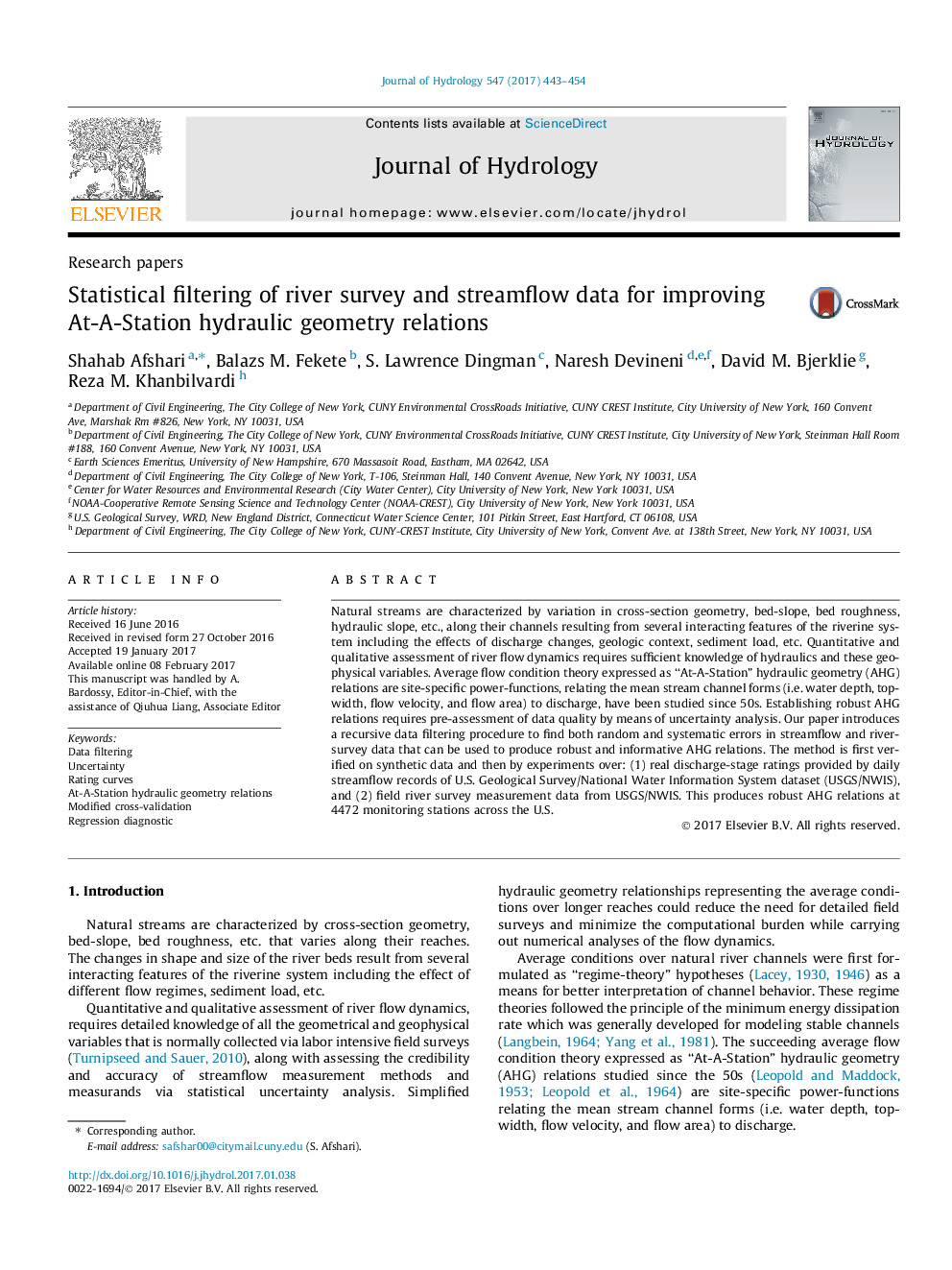| Article ID | Journal | Published Year | Pages | File Type |
|---|---|---|---|---|
| 5771058 | Journal of Hydrology | 2017 | 12 Pages |
â¢AHG relations developed from raw river-gaging observations distorted by local and temporary hydraulic effects.â¢The distortion can be removed by data-filtering procedures.â¢Undistorted AHG relations are established for 4472 USGS sites.â¢The statistical and geographic distributions of the AHG exponents are described.â¢AHG exponents are employed for estimating the asymptotic power-law riverbed geometry.
Natural streams are characterized by variation in cross-section geometry, bed-slope, bed roughness, hydraulic slope, etc., along their channels resulting from several interacting features of the riverine system including the effects of discharge changes, geologic context, sediment load, etc. Quantitative and qualitative assessment of river flow dynamics requires sufficient knowledge of hydraulics and these geophysical variables. Average flow condition theory expressed as “At-A-Station” hydraulic geometry (AHG) relations are site-specific power-functions, relating the mean stream channel forms (i.e. water depth, top-width, flow velocity, and flow area) to discharge, have been studied since 50s. Establishing robust AHG relations requires pre-assessment of data quality by means of uncertainty analysis. Our paper introduces a recursive data filtering procedure to find both random and systematic errors in streamflow and river-survey data that can be used to produce robust and informative AHG relations. The method is first verified on synthetic data and then by experiments over: (1) real discharge-stage ratings provided by daily streamflow records of U.S. Geological Survey/National Water Information System dataset (USGS/NWIS), and (2) field river survey measurement data from USGS/NWIS. This produces robust AHG relations at 4472 monitoring stations across the U.S.
